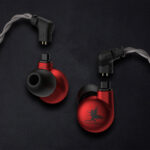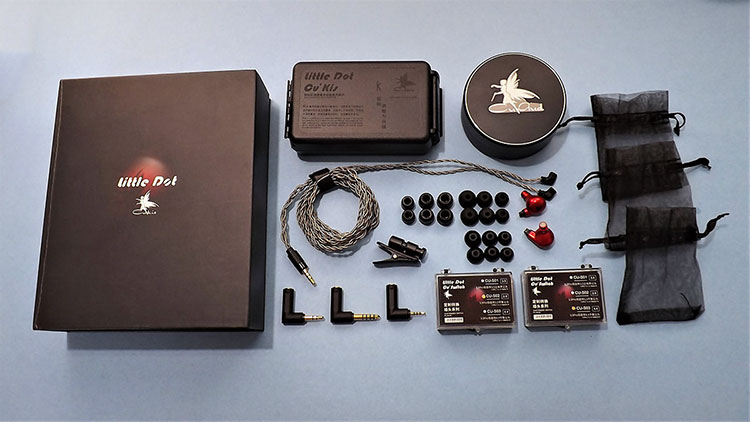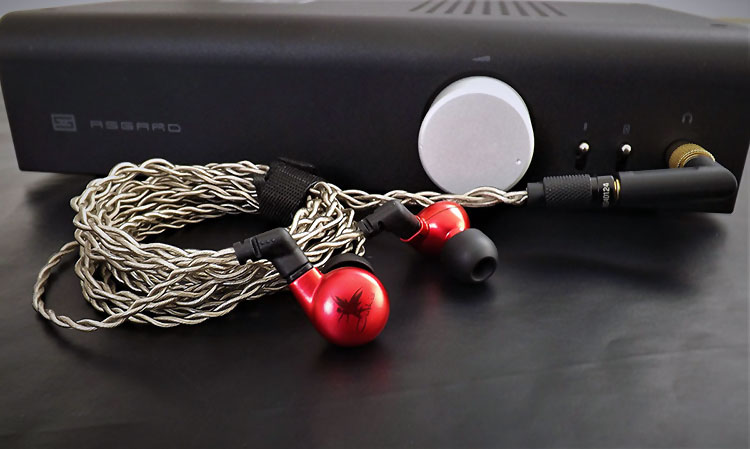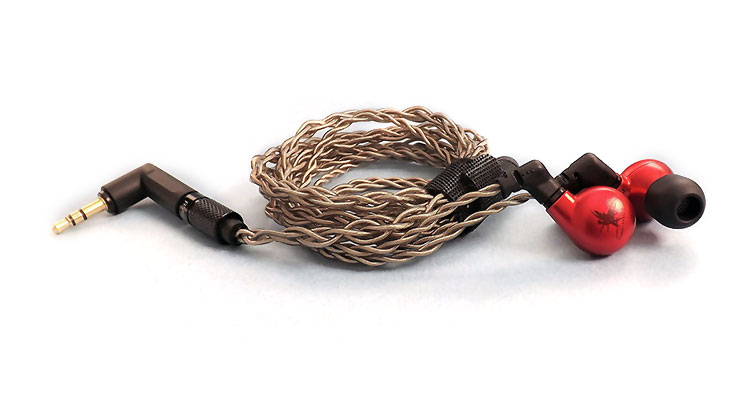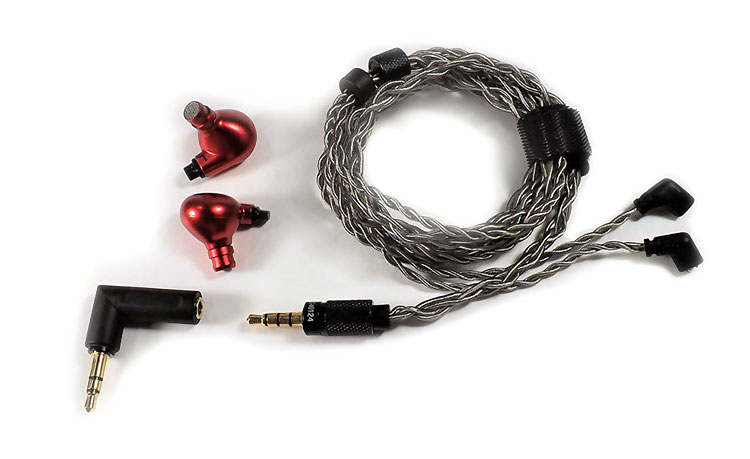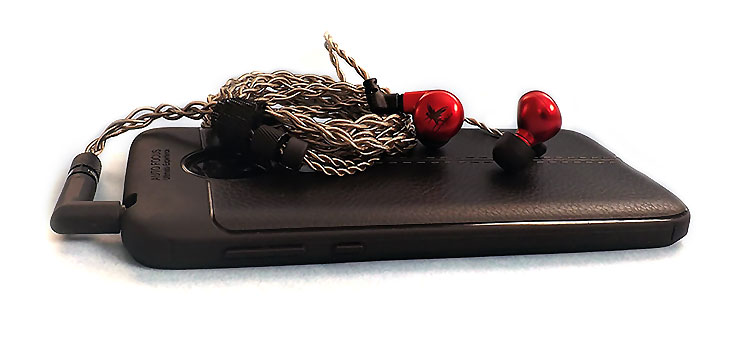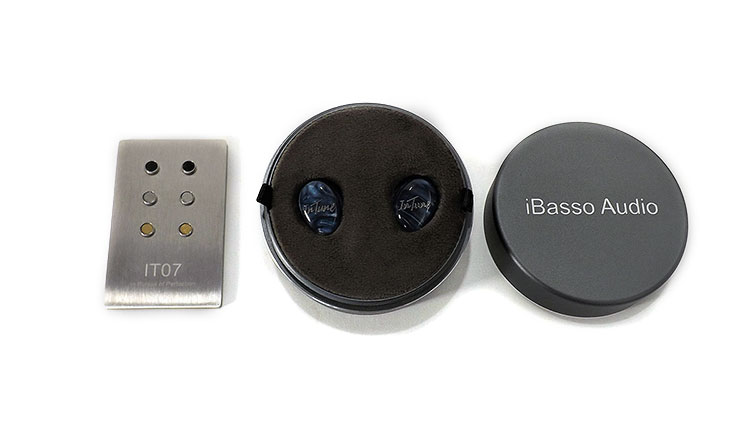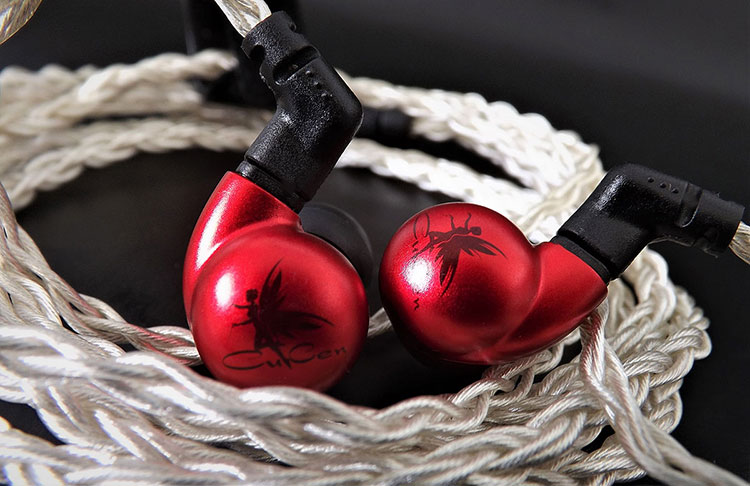The Little Dot Cu KIS is the company’s flagship universal IEM featuring twin 10mm dynamic drivers and a dual balanced armature design. It is priced at $729.99.
Disclaimer: The Little Dot Cu KIS sent to us is a sample in exchange for our honest opinion in this review. We thank the team at Little Dot for giving us this opportunity.
To read more about Little Dot reviews previously done on Headfonics please click here.
Note, this review follows our new scoring guidelines for 2020 which you can read up on here.
Here we go, round number four and last round of my Little Dot IEM journey and we hit the top tier this time, and now, the Little Dot Cu KIS is up for review and stepping into the ring.
So far we reviewed the clean-sounding V-shaped Cu Rad, then we reviewed the Cu Wyn with its warm, bassy sound. Then we reviewed the very good-sounding Cu Cen which is labeled the best midrange and vocal IEM in their lineup.
The Little Dot Cu KIS is Little Dot’s flagship IEM and is labeled their no-compromise IEM. Think Cu Cen but double the order and add some extra sauce.
After 18 months of development, over 160 testers, 14 rounds of a beta listening test, and after 86 different versions from the original beta, the Little Dot Cu KIS was born from Little Dots principle of ‘Keep Improving and Sincerity’ which gives origin to the name KIS.
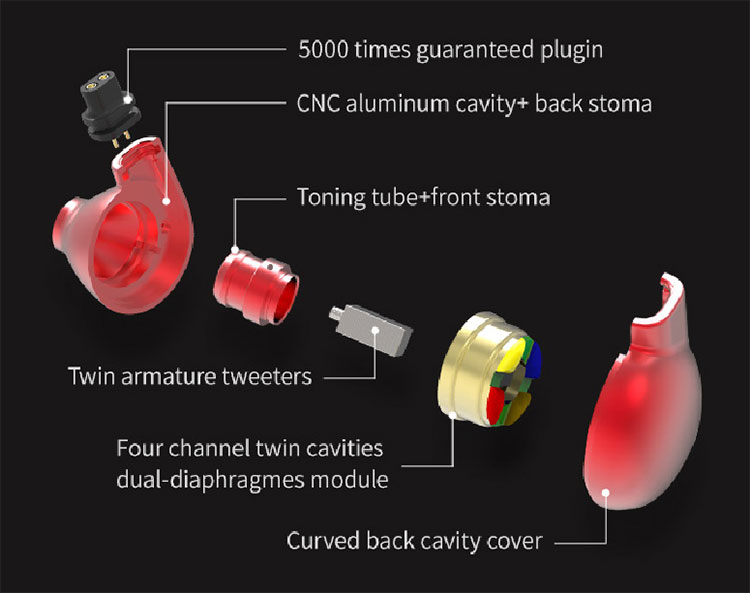
Tech Inside
The little Dot Cu KIS has a dual carbon dynamic driver design with a twin armature configuration. Everything is doubled up compared to the Cu CEN.
The drivers are mounted in what Little Dot calls a multilayer looping structure and Little Dot claims this design makes up a large part of the sound signature of the Cu KIS besides employing some other tuning tricks.
Looking over the design it looks as though Little Dot mounted their drivers in a chamber similar to a horn-loaded or a Labyrinth speaker system but a mini version within the aluminum shells.
Dual ADLC Design
The Little Dot Cu KIS is a hybrid 2 driver design with a twist because each driver is a double driver and there are two sets inside each shell.
The first driver is a dynamic dual 10mm driver with a four-channel twin cavity dual-diaphragm module. This driver handles the low-end frequencies mostly. This driver has dual Amorphous Diamond-Like Carbon diaphragms or ADLC drivers as Little Dot calls them.
It seems the diaphragms are mounted as a mini Isobaric type with four connections to the different coil systems within the module, or in this case the driver. It almost reminds me of two Isobaric mounted dual coil woofers wired in parallel or in series to obtain the desired impedance.
Dual Custom Armatures
The second driver array is a customized dual Balanced armature array. Each array contains two different Balanced Armature drivers. One BA handles some mid frequencies with some high frequencies and the second is a super tweeter type that handles the ultra-high frequency range. This system resembles a three-way system.
They both sit in a single BA shell and are individually vented separately from the dynamic driver to eliminate interference from each other in the form of backpressure allowing every driver to breathe freely and independently with a multi-vent system in each shell.
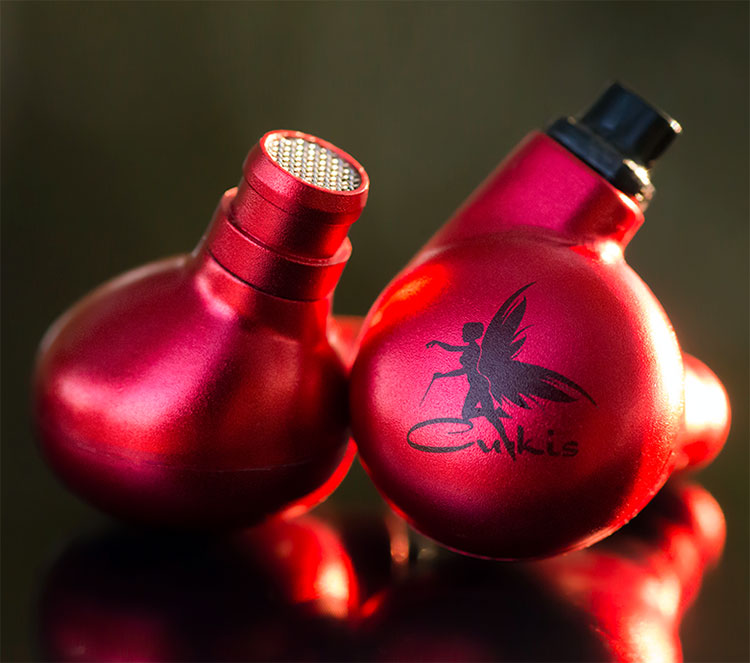
Design
Aluminum Shells
These shells are somewhat similar to their Cu CEN IEM but are smaller although the Cu KIS IEMs have a twin dual-driver design and the CEN has only two single drivers. These shells are curvier and sexier.
The shells are made of quality aerospace-grade aluminum. A precision CNC machine was used to carve out the inner section of the aluminum cavity.
Multilayer Looping Structure
The shells have some tech involved for tuning purposes. The housings have a multilayer looping structure that solves reverb issues. Also, Part of the tuning of the Little Dot Cu KIS was done by tuning the output nozzle which is also made of aluminum and has the same finish as the shells.
Anodic Oxidation
Speaking of the finish on those shells. In the previous review, I mentioned the Cu CEN looked good enough to eat and I stand by that so please keep them away from small children and some dogs too.
I threw some complicated lingo about Anodic Oxidation in the last review but came back with some research. Have you ever heard of a process called electroplating? This process is similar but just takes it a step further far as in the composition of the enamel and surface preparation. I hope that was easy enough to comprehend.
The finish is very nice and seems to be very durable. The oxide coating gives them a metallic look which I like.
Comfort & Isolation
What can I say? The Little Dot Cu KIS is a light IEM that has a long output tube and, with the right flanges is very comfortable and because of the way Little Dot designed the shells, they barely touch the ear.
I felt the wire ear loop more than the IEM itself, although the loop is not fixed or made of memory wire and is quite soft. Their size is smaller compared to the Cu CEN and that makes the Cu KIS lighter although they have more drivers and more tech inside each shell.
Isolation is average for an IEM. Passively most IEMs with the proper flanges can reduce up to 26 decibels and these are just a hair under that.
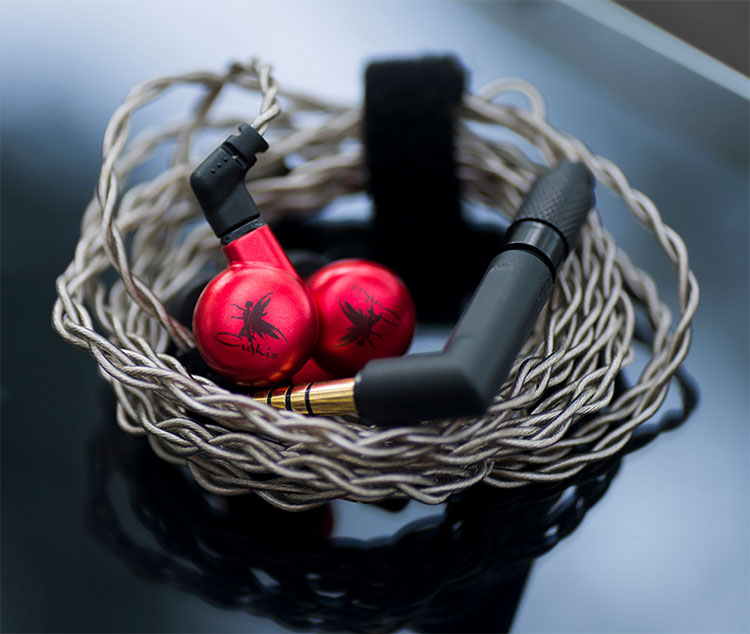
Stock Cable
Little Dot decided to include a wire that is made with a special alloy which they claim enhances the Cu KIS sound signature and ensures the Cu KIS performs at its best.
The same metal 3.5mm TRRS 4 pole balanced plug was used but the wire is different and resembles guitar strings with transparent insulation. The wire looks silver but I think Little Dot found a new type of wire here and I have not seen this type before.
The four-strand braid goes up to twin twisted wires that use the same rubberized plastic Y splitter piece and adjuster as the Cu CEN wire.
I like it because it rarely tangles up and it has no microphonics whatsoever. The Little Dot .78mm sleeve connector is also used which has a guarantee of 5000 connection times.
Adaptivity
Little Dot also includes their adapters which leave little to be desired when it comes to connectivity and they cover most types. You get 3 adapters that convert the 3.5mm TRRS 4 pole balanced plug into a 3.5mm 3 pole single-ended, a 2.5mm balanced, and a 4.4mm balanced Pentaconn.
What more connectivity could you ask for? One wire handles 4 different connection types. The adapters all have 45-degree angles and do make the plug longer but the versatility is the tradeoff and it’s a good one I would say.
Packaging & Accessories
The box is black and well illustrated with a magnetic flap that opens to reveal the contents of the Little Dot Cu KIS. On the inside flap, there is a good description and ample illustration of the product, the tech involved, and specifications.
You get both Little Dot cases, the metal hockey puck, painted black with the Little Dot Fairy logo and you also get the mini black Pelican case with the Cu KIS info etched on the top. You also get 3 foam flanges. 3 rubber and 3 spin fit flanges plus a wire clip.
The flanges come in cloth mini sacks which are convenient to have with so many flanges but I guess that is why you get 2 cases, one for storing the IEM and one for storing the unused accessories.
Sound Impressions
Summary
When you first hear the Little Dot Cu KIS you get a very lively and forward sound signature. They have an upfront presentation and will throw all the frequencies and all the detail at you in full force and in a very dynamic manner. They also need a long burn-in, very long.
To start getting into specifics, the Cu KIS did not hit the low notes as its little brother the Cu CEN dropping off earlier in the lower bass region in the tone generator test. Bass started dropping off at about 24hz where the Cu CEN started dropping below 20hz. However, Bass seems more present and prominent on the Cu KIS.
The upper frequencies extended better than the Cu CEN and it is more than likely attributed to the fact that the Cu KIS has an extra BA super tweeter in its driver arsenal. However, there are two prominent peaks. One is at 2khz and the biggest one is at 4khz.
The 2khz and especially the 4k peak are slightly prominent and need to be toned down by either using a tube amplifier, a warm sounding amplifier, or an equalizer if you are using a bright sounding solid-state amplifier.
These require warm sounding amplification and some might find some bright sounding amps to take these to a level where they become too edgy in those peak regions.
Sub Bass
The Little Dot Cu KIS has the second most prominent bass from the entire Little Dot line, second to the Cu Wyn, although the tone generator test showed that these roll off earlier than its little brother, the Cu CEN.
However, the Cu KIS does bass better than the Cu CEN and the rest with better definition and tends to isolate the bass well from the rest of the frequency spectrum. The crossover point seems lower making the dynamic driver exclusively produce bass
The sub-bass on the Cu KIS sounds isolated as if it was a separate subwoofer. It is a touch forward and unlike the Cu CEN, it needs little or no equalization to give you a good sense of the visceral low end.
Bass
Most of the frequency spectrum on the Little Dot Cu KIS is forward sounding. What I like about the Cu KIS bass is the clarity of each note produced even though it’s a forward sounding bass.
The bass is fast responding and has a good amount of attack and decay. Tonality is pretty good and I have no complaints because I could distinguish bass notes clearly.
Perhaps some would find it a touch elevated but I think that elevation is tasteful in a world full of bass flat sounding IEMs. Color is good if it is done well and I would not consider the bass of the Cu KIS flat or bloated but rather fun sounding.
Midrange
Here is where the Little Dot Cu KIS gets tricky because there are some peaks that you have to tame because these peaks do alter the tonality in general around the entire midrange area.
Once you do, I am sure you will find the midrange pleasing in a way that it has very good natural tonality, with a ton of microdetail, for example, breathing is heard easily from singers.
An example of midrange detail retrieval would be Steely dan’s “Black Cow”. I probably heard this song a thousand times but only the Cu KIS revealed a huge amount of echo in the vocals I never heard before on the right channel particularly.
There is an edginess to the tonality especially in the upper midrange that was present on the Cu KIS but not on the Cu CEN and probably because of the 2k and 4k peaks mentioned.
What does the Cu KIS midrange bring to the table here? A ton of layering and sound distinction and the different elements never lose coherence just like its smaller brother, the Cu CEN which is designated as a very good midrange IEM.
Upper midrange
This area is probably the most forward in presence in the Little Dot Cu KIs sound signature and some people might find them too intense in this region.
The trick here is to find the right amplifier for the Little Dot Cu KIS. For example, my Zen Stack gave these IEMs that edge in the midrange I was talking about, then I tried the Schiit Asgard with the AK4490 DAC chip, and things got better.
Since I do not own any tube amplifiers and mainly a solid-state guy, I located a friend who did have a Dark Voice and, voila, those peaks were gone along with some harshness. IEMs made by Little dot sound good on tube amplifiers which are famous for making tube amplifiers. I should have known.
Once you jump through some of these mentioned hurdles, you will get great results with a warm, very clean, and detailed midrange that is worthy of the investment.
Treble
I like the highs on the Little Dot Cu KIS. They sound sharp and crisp. They seem fast with a good ability to handle complex recordings.
The highs seem to have lots of airiness and demonstrated in the tone generator test that they have a very good extension ability and can go far up into the high-frequency range. The high-frequency response is a hair under what I would consider hot but if you feed them clean power, you will get sharp highs nonetheless that will not hurt your ears that sound quite revealing.
You will get presence and good directionality from the high frequencies produced by the Cu KIS long as you feed them good amplification with good recordings.
Staging
The Little Dot Cu KIS has a wider soundstage compared to their little brother the Cu CEN which to me seemed more up close and personal. The Cu KIS seems larger in staging but is still not ultra-wide but still have the ability to do well recreating smaller spaces if needed.
There seems to be a very good amount of height and forward depth with a good amount of width. The Cu KIS can also rear projects when needed. The Cu KIS can also do placement better than its little brother the Cu CEN. It also does imaging well and can pan sound anywhere the recording demands on a left to right plain.
Layering
The Little Dot Cu KIS has very good layering capabilities and everything seems to be reproduced in a way that there exist separation and distinction of each element in a recording. To me, this seems apparent even in the bass and it seems the low-frequency dynamic driver has a lower crossover point from the norm and makes it sound like a subwoofer type bass.
The bass seems to be a separate entity from the rest of the spectrum and that is pleasing. Midbass bleed is nonexistent. The good layering characteristics carry over through the frequency spectrum and some recordings tend to produce a good amount of directionality.
Synergy
I cannot emphasize enough the fact that these need warm-toned amplification. You could always use an equalizer and to my taste, I slightly lowered the 2k and 4k frequencies while using bright sounding amplification with very good results.
The Little Dot Cu KIS is very efficient but seems to eat up power for lunch and dinner. The fact that they sound great on an Asgard on the high gain which is rated at 5 watts per channel says it all.
However, the feat of taking all that power and just becoming deeper and cleaner but also sounding great off a phone or something with low power like the Zorloo Ztella gives the Cu KIS a high amount of versatility.
Plus the fact that they come with every possible connection except for the standard 6.35mm and XLR plugs makes them even more versatile yet.
Selective Comparisons
Ibasso Audio IT07
The Ibasso IT07 came in the other day for review and we will have a full review up soon. They seem to be a formidable IEM in their price bracket. This IEM costs more so what do we get for the extra investment?
The accessory list is different for instance you get two cases with the Cu KIS and only one with the Ibasso but it seems to be more durable and heavier in weight made of thicker aluminum.
I like the wire more so on the Cu KIS and the adaptability it offers. The Ibasso comes with a balanced wire fitted with a 2.5mm TRRS with an adapter that converts the plug into a conventional 3.5mm TRS single-ended plug but you do not get the Pentaconn TRRRS or the balanced 3.5mm.
The Ibasso has a filter system that changes the sound characteristics and signature. There are four sets and three of them come mounted on a heavy-duty metal plaque. The packaging on the Ibasso is excellent.
Sound
I do not want to give away much info until the full review but the Ibasso IT07 does layering very well with a sound signature that needs no equalization. It plays all the frequencies evenly with no peaks to worry about.
The bass has about the same amount of presence but the bass seems flatter and more linear on the IT07 but more fun on the Cu KIS. The midrange on the two models varies by the fact that the Ibasso IT07 has the flatter frequency response and presentation in the midrange.
The highs are softer and are not as sharp and tend to have a softer character which is a typical goal in sound signature today it seems.
Little Dot Cu CEN
Why would I spend more money on an IEM from the same company that is similar in appearance with similar accessories? What are the differences?
The accessories list is about the same with a good cable and the included two cases. The change is mainly in the type of wire that was used to make the cable itself. Somehow the Cu CEN is larger although they only have 2 single drivers when in fact the Cu KIS has 2 double drivers which should occupy more space physically.
They weigh about the same and both have that long stem round body design that barely touches the inside of the ear so they both seem to at the same comfort level but perhaps better on the Cu KIS by a hair.
Sound
The Cu CEN is a midrange first IEM in some small way because they can be transformed into some hard-hitting IEMs with a touch of bass boost and I felt it is necessary because of their shyness in the bass department especially the lower octave.
The lower octave rolls off earlier on the Cu KIS but the CEN has less presence in the bass. The midrange is almost the same except for a touch of added detail on the Cu KIS. There is also a sense of a larger sound panorama. The Cu KIS seems to present a more spacious panorama.
In the treble department, both have good highs but the Cu KIS extends better probably because of the addition of a super tweeter inside the Balanced Armature assembly and they also have more presence.
Our Verdict
I like the Little Dot Cu CEN a lot and at the end, my thoughts took me to the question of why would I spend extra money on a similar IEM from the same company with similar accessories? Because it is the best in the Little Dot lineup.
The fact that they need to be fed warm amplification is their only caveat besides needing a long break-in. You could always tune out those peaks with an equalizer. But once you amplify these the right way they can be quite spectacular. Even more so than the Cu CEN.
They have a good natural tonality with a bit of forwardness and the ability to extend beyond your immediate space with layering for days. They produce lots of micro detail and sound very dynamic.
The Little Dot Cu KIS is a fun sounding IEM. Forget the Harman curve, flat frequency response curves, and all that stuff. Throw that out the window with this IEM and just lay back and listen to some music. That is what these are for. With the right amplification, the Cu KIS can be a wonderful listen.
Little Dot Cu Kis Specifications
- Connector Type: CIEM 0.78mm 2 pin
- Driver Type: 10mm dual Dynamic and dual Armature
- Distortion: <0.05% @1000hz
- Impedance: 18 ohms +/- 2.7 ohms
- Plugs: 2.5/3.5/4.4 balanced gold plated plug. And 3.5mm TRS plug
- Frequency Response: 12hz – 40Khz


